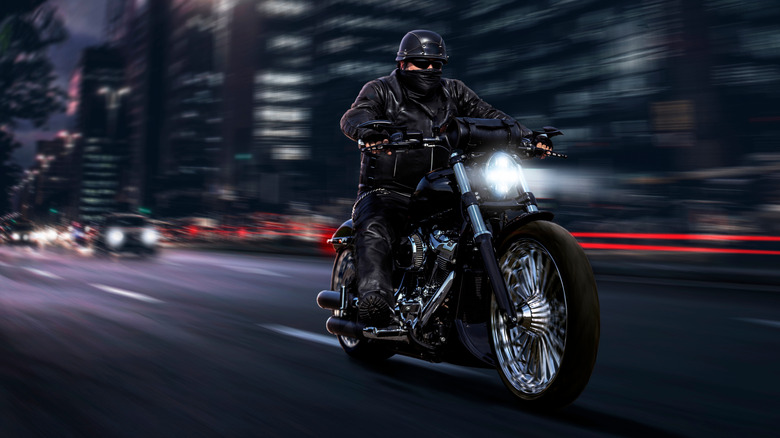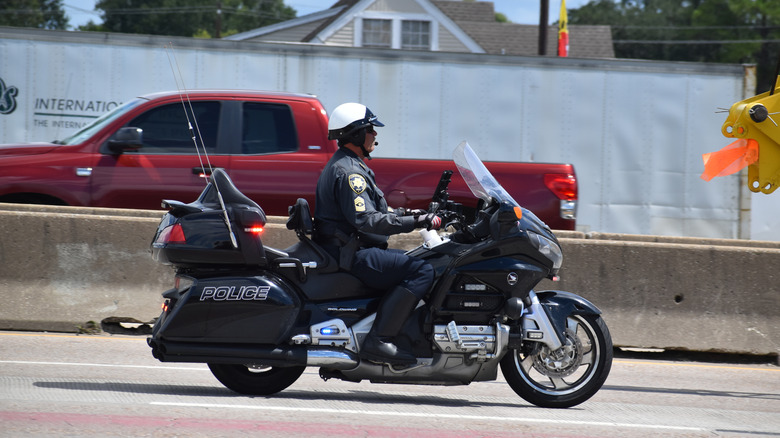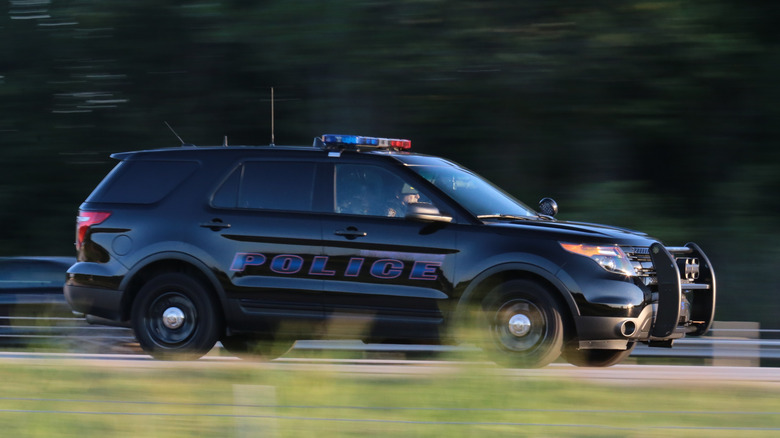What Are Motorcycle No-Chase Laws And Why Are They Important?
Many people view riding a motorcycle as one of the most dangerous activities a person can engage in. Given the limited protection that motorcycles typically provide their riders, it makes sense that this conclusion has become commonplace in today's automotive industry. Many governments worldwide have implemented regulations designed to ensure the safety of all bikers, whether they are high school students commuting to and from school, or experienced riders speeding down a racetrack. For the most dangerous riders, however, this is where no-chase laws become come into play. These policies are designed to significantly minimize the risks of collateral damage during a police pursuit.
At first glance, you might think the phrase "no-chase" means that a police officer can't pursue you if you've broken the law and are fleeing on your motorcycle. Well, you wouldn't be entirely wrong to think this. The officer might refrain from pursuing you as they would someone in a four-wheeled vehicle. However, this doesn't mean they will give up entirely. While some view no-chase laws as restrictions preventing an officer from outright pursuing a lawbreaker on a motorcycle, others see them as policies designed to help officers bring in bikers safely, without endangering themselves or the public. Of course, these rules are nuanced and vary from one jurisdiction to another. Let's examine them closely to understand how they enhance road safety, and why they are so important.
They provide a framework for decision-making during critical moments.
At the core of many road rules and regulations is safety, of course. For motorcycles specifically, these rules and regulations are even more crucial. It doesn't matter if you're riding the coolest Honda ever made or one of Indian's brand-new Sport Chiefs as you cruise down the highway: Following these rules will ensure a smooth experience for everyone on the road, including you. For no-chase laws, officers assess safer alternatives to pursuits, such as using their vehicles to block the road or employing aircraft like helicopters to monitor the individual of interest instead of actively chasing them.
What most people don't realize is that police pursuits are more akin to chess than checkers. Every decision made in the heat of the moment is crucial, especially since lives are at stake. Suppose an officer successfully arrests someone who has fled with a stolen motorcycle: The pursuit was chaotic, resulting in the destruction of public property and the suspect suffering an injury. The case will have to be reviewed by the Independent Office for Police Conduct, where the officer will need to justify their actions.
What if a chase leads to more than just property damage or injuries? What if it weaves through neighborhoods where children are playing, and they get caught in the pursuit? Every choice made by an officer will require an explanation later on, whether before a superior or in a courtroom. This is why no-chase policies are essential; they offer a framework for decision-making in critical moments. However, they do much more than that.
No-chase policies vary from one jurisdiction to the next
No-chase laws do more than just ensure that an officer can bring someone in without endangering lives. They also shield the police department and local governments from lawsuits, while safeguarding the suspect's constitutional rights, as they are considered innocent until proven guilty. These laws vary from one jurisdiction to the next. In Chicago, for example, no-chase laws forbid the authorities from outright pursuing traffic offenses — with the exception of driving under the influence or vehicle theft. Officers are also prohibited from engaging in pursuit while operating motorcycles.
In the state of Washington, authorities only pursue bikers believed to have committed serious criminal offenses. Even so, strict rules are enforced during the attempt to apprehend the suspect, with one of the primary priorities in the chase being safety. Local police departments also have specialized pursuit policies designed to minimize casualties during a motorcycle chase.


